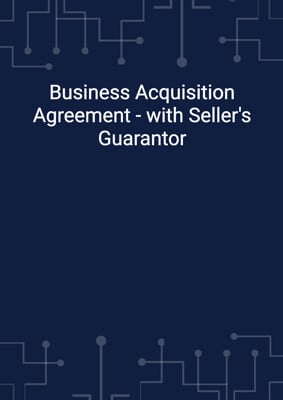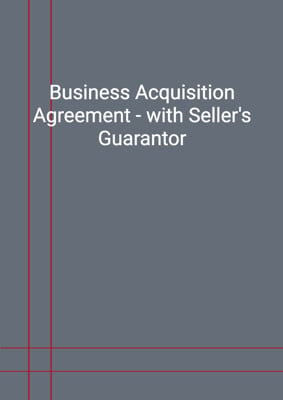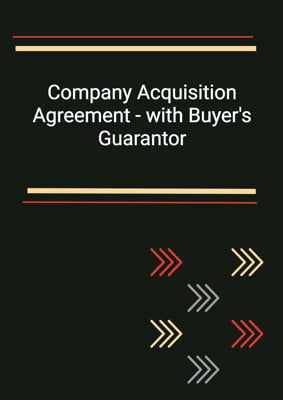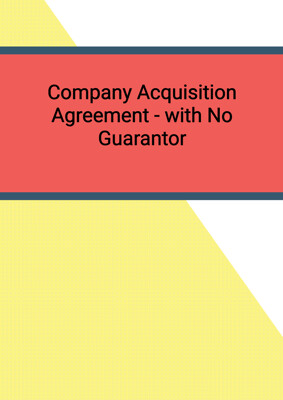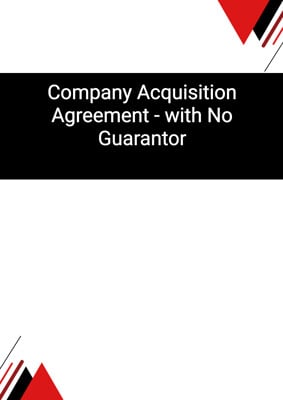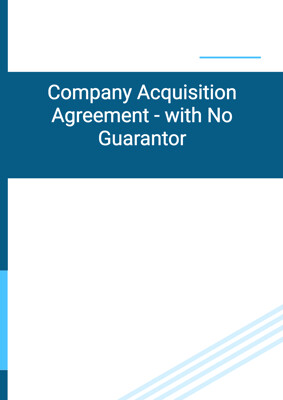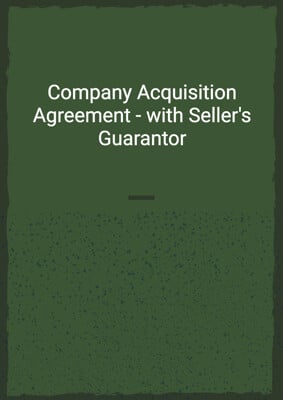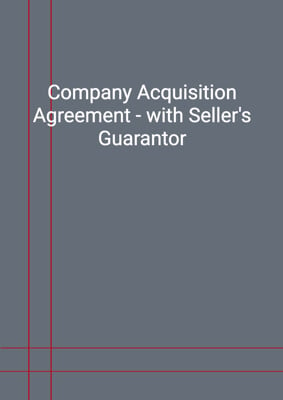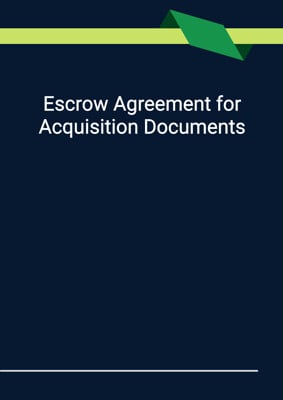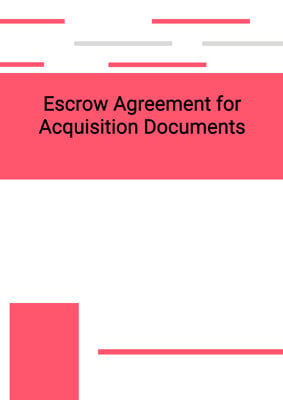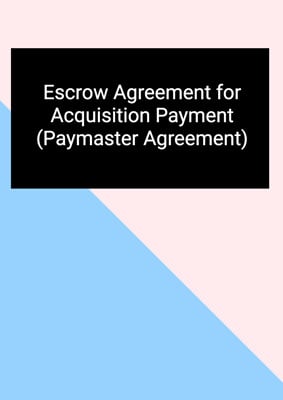
Company Acquisition Agreement - with Seller's Guarantor
Buyer Form - 3 Sellers
A company acquisition agreement between a Buyer and 3 Sellers with the Sellers' parent guaranteeing the obligations. The Sellers' warranties are included in another template. This agreement is drafted in favour of the Buyer.
How to Tailor the Document for Your Need?
01
Create Document
Fill in the details of the parties. You can click the "Fill with Member’s Information" button to complete it with information saved to your account.
02
Fill Information
Please fill in any additional information by following the step-by-step guide on the left hand side of the preview document and click the "Next" button.
03
Get Document
When you are done, click the "Get Document" button and you can download the document in Word or PDF format.
04
Review Document
Please get all parties to review the document carefully and make any final modifications to ensure that the details are correct before signing the document.
Document Preview
Document Description
The Company Acquisition Agreement - with Seller's Guarantor is a legal document that outlines the terms and conditions for the acquisition of a company. The agreement is entered into between the sellers, who are the current owners of the company, and the buyer, who wishes to purchase the company. The agreement also includes a guarantor, who guarantees the performance of the sellers' obligations under the agreement.
The agreement begins with an interpretation section, which defines the key terms used throughout the document. It also includes schedules that provide additional details, such as the details of the company and its subsidiaries, the warranties provided by the sellers, and the completion accounts.
The agreement covers various aspects of the sale and purchase of the shares, including the sale price, conditions to completion, pre-completion undertakings, completion, post-completion undertakings, restrictions on the sellers, warranties, limitations on claims, and the buyer's rights to terminate.
The agreement also includes provisions regarding withholding tax and grossing up, the entire agreement between the parties, variation of the agreement, assignment of rights, announcements, costs, severability, governing law and jurisdiction, notices and service, and waivers/buyer's rights and remedies.
The detailed description provides a comprehensive overview of the agreement, highlighting its importance in facilitating the acquisition of a company and protecting the rights and obligations of the parties involved. It covers all sections of the agreement and provides a detailed explanation of their purpose and significance.
How to use this document?
To use the Company Acquisition Agreement - with Seller's Guarantor, follow these steps:
1. Review the agreement: Familiarize yourself with the terms and conditions outlined in the agreement. Pay close attention to the sale price, conditions to completion, pre-completion undertakings, completion, post-completion undertakings, restrictions on the sellers, warranties, limitations on claims, and the buyer's rights to terminate.
2. Seek legal advice: Consult with a legal professional to ensure that you fully understand the implications of the agreement and to address any specific concerns or questions you may have.
3. Negotiate the terms: If necessary, negotiate the terms of the agreement with the other parties involved. Ensure that all parties are in agreement before proceeding.
4. Execute the agreement: Once the terms have been finalized, sign the agreement along with the other parties involved. Make sure that all signatures are valid and that the agreement is properly executed.
5. Fulfill obligations: Adhere to the obligations outlined in the agreement, including any pre-completion undertakings and post-completion obligations.
6. Seek legal remedies if necessary: In the event of any breach of the agreement or if any issues arise, consult with a legal professional to explore your options and seek appropriate legal remedies.
Note: This guidance is provided for informational purposes only and should not be considered legal advice. It is recommended to consult with a legal professional for specific guidance tailored to your situation.
Not the right document?
Don’t worry, we have thousands of documents for you to choose from:




















